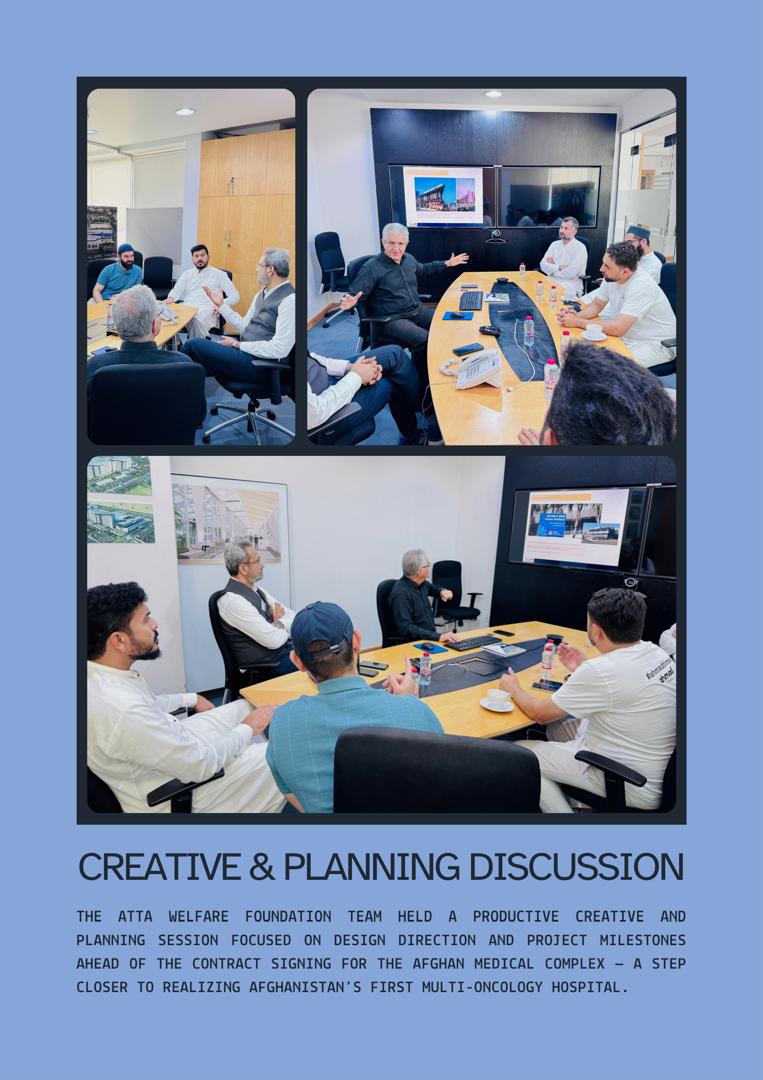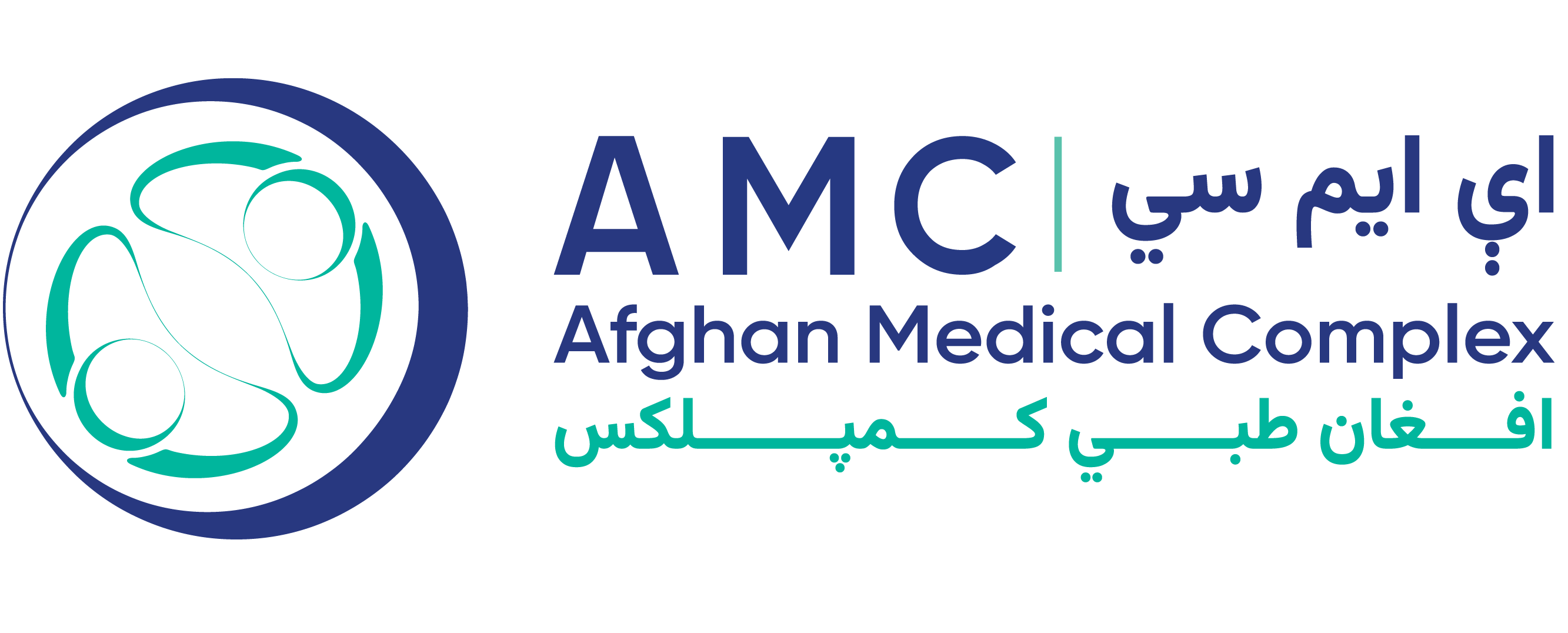Post-Contract Planning and Creative Discussion: Aligning Vision and Design for the Afghan Medical Complex
AMC
Afghan Medical Complex

Share this article:
Introduction
Following the recent signing of the consultancy contract with TAHPI, the Atta Welfare Foundation (AWF) organised a post-contract planning and creative discussion with the architectural design team, client representatives, and technical reviewers.
The purpose of this session was to refine the design strategy for the Afghan Medical Complex (AMC) — Afghanistan’s first multi-oncology hospital — and to ensure complete alignment between all parties on project priorities, design objectives, and contextual realities.
A Collaborative Start
The discussion brought together the core partners of the AMC project:
Atta Welfare Foundation (Client) – represented by the project leadership team.
Architectural and Engineering Design Team – responsible for preparing schematic and detailed designs.
TAHPI (Technical Reviewer and Vetting Consultant) – providing international-level technical oversight and healthcare planning expertise.
This multi-stakeholder session symbolised the next chapter of AMC’s development — transitioning from agreements to action through structured coordination, creativity, and strategic alignment.
Focusing on Afghanistan’s Realities
A key part of the discussion centred on designing within the Afghan context, acknowledging the unique challenges of healthcare infrastructure in the country.The teams jointly reviewed and debated approaches to ensure the hospital design would:
Reflect Afghanistan’s environmental and climatic conditions, including natural lighting, energy efficiency, and seismic resilience.
Respond to local accessibility challenges, ensuring that patients from across the provinces can reach the hospital with ease.
Integrate cost-effective and sustainable materials that are locally available to reduce construction and maintenance costs.
Comply with Afghan regulations and cultural considerations while maintaining international standards for hospital functionality and patient comfort.
This conversation underscored a shared understanding — that AMC must not only be technically sound but also practically achievable and sustainable in the Afghan setting.
Reviewing Regional and Global Case Studies
To support decision-making, the session included a review of regional and international hospital projects relevant to AMC’s scale and mission.
These examples helped identify best practices in oncology centre design, space management, patient flow, and facility operations. Lessons were drawn from hospitals that successfully balanced international quality standards with local resource realities.
By studying these projects, the teams gained a clearer picture of what works in similar socio-economic and environmental contexts — and how AMC can adapt those lessons to Afghanistan.
Creative and Seasonal Design Discussion
The discussion also involved early creative and seasonal design considerations, exploring:
Building orientation and natural light to improve patient well-being.
Green and open spaces to enhance psychological healing environments.
Climate adaptation strategies, such as managing Kabul’s seasonal temperature extremes.
Functional zoning, ensuring efficient patient movement, emergency access, and service flow.
These creative exchanges allowed the architects, technical reviewers, and client representatives to explore design possibilities beyond structural drawings — focusing on how the hospital can feel humane, healing, and deeply Afghan in character.
Agreement on the Planning Pathway
By the end of the session, all parties reached a shared understanding and agreed on:
A structured design review calendar, ensuring regular coordination between architects, AWF, and TAHPI.
A planning framework that integrates Afghan conditions with international healthcare design principles.
A commitment to collaboration, where each party contributes transparently to problem-solving and innovation.
This collective agreement ensures that the Afghan Medical Complex will be developed through an inclusive, transparent, and technically robust process.
Conclusion
The post-contract planning and creative discussion marked an important step in turning AMC’s vision into actionable design. Through this meeting, AWF, the architectural team, and TAHPI reaffirmed their joint commitment to build a hospital that is both technically excellent and deeply rooted in the Afghan reality.
As the design process moves forward, this spirit of collaboration will continue to guide every decision — ensuring that the Afghan Medical Complex becomes a centre of hope, quality, and compassion, offering free to affordable local cancer treatment for generations to come.

